Introduction: The best Emerging Technologies of 2023
The year 2023 is ushering in a wave of groundbreaking technologies that promise to reshape our world. From revolutionary innovations in space technology to cutting-edge advancements in artificial intelligence and healthcare, these emerging technologies are driving progress and offering exciting possibilities for the future. In this article, we will delve into “The best Emerging Technologies of 2023,” with a particular focus on “The best Emerging Technologies of 2023,” “Starlink Internet,” “Ectolife,” “Quantum Computing,” “The Metaverse,” and many more. Let’s embark on a journey through “The best Emerging Technologies of 2023.”
Table of Contents
- The best Emerging Technologies of 2023:Starlink A Game-Changer
“The best Emerging Technologies of 2023” is a satellite internet constellation operated by SpaceX, providing high-speed, low-latency internet access to users worldwide, even in remote and underserved areas. What sets “The best Emerging Technologies of 2023” apart is its unique approach. These satellites orbit much closer to Earth, at about 550 kilometers, resulting in significantly lower latency, ensuring faster data transmission. Moreover, “The best Emerging Technologies of 2023” employs a mesh network of satellites to route traffic, reducing congestion and enhancing reliability.
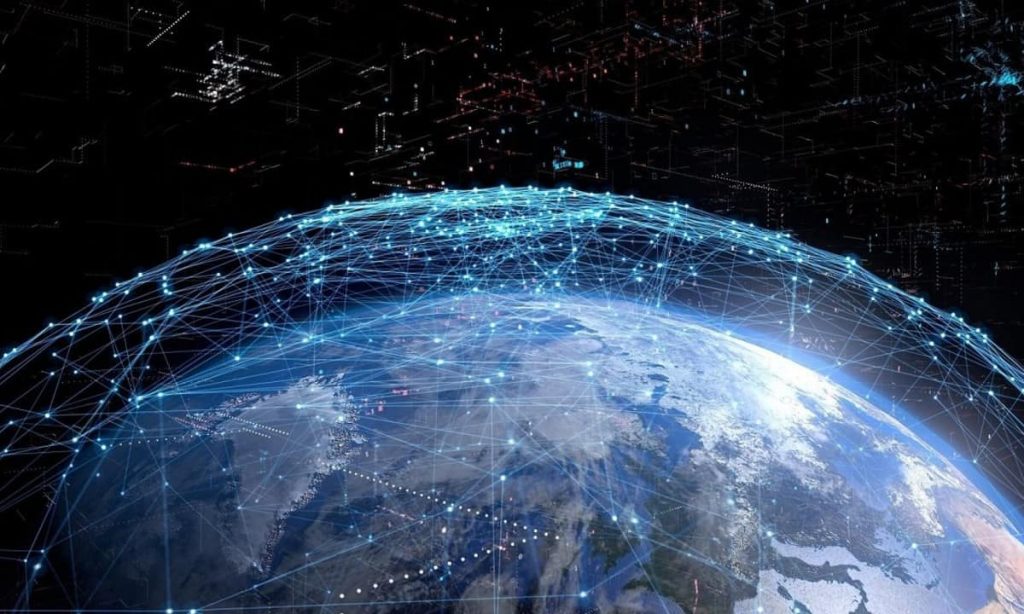
It’s currently in beta testing but is already available to users in many parts of the world. SpaceX’s ambitious plan is to expand coverage until “The best Emerging Technologies of 2023″ is accessible globally.
- Ectolife: The Future of Childbirth
“Ectolife” is a concept designed by Hashem Algali, a biotechnologist and science communicator, envisioning a futuristic way of conducting childbirth. “Ectolife” proposes the use of artificial wombs to incubate babies for nine months. These facilities would be powered by renewable energy and capable of housing up to 30,000 babies simultaneously. Babies would be incubated in growth pods that mimic the conditions inside the uterus, equipped with sensors to monitor vital signs and AI for detecting potential genetic abnormalities. Parents could even choose to genetically engineer their babies before implantation using CRISPR-Cas9 gene editing, eliminating genetic disorders and selecting physical traits.

- Pilot Manufacturing of Wearable Sensors
Pilot manufacturing of wearable sensors involves producing a small batch of sensors to test manufacturing processes and product design in real-world conditions. This step is crucial in developing new wearable sensor technology, ensuring quality and reliability. The type of sensor being produced is a critical factor, with some requiring high precision, like heart rate monitors, and others aimed at tracking activity levels or sleep patterns, which may have less demanding specifications.
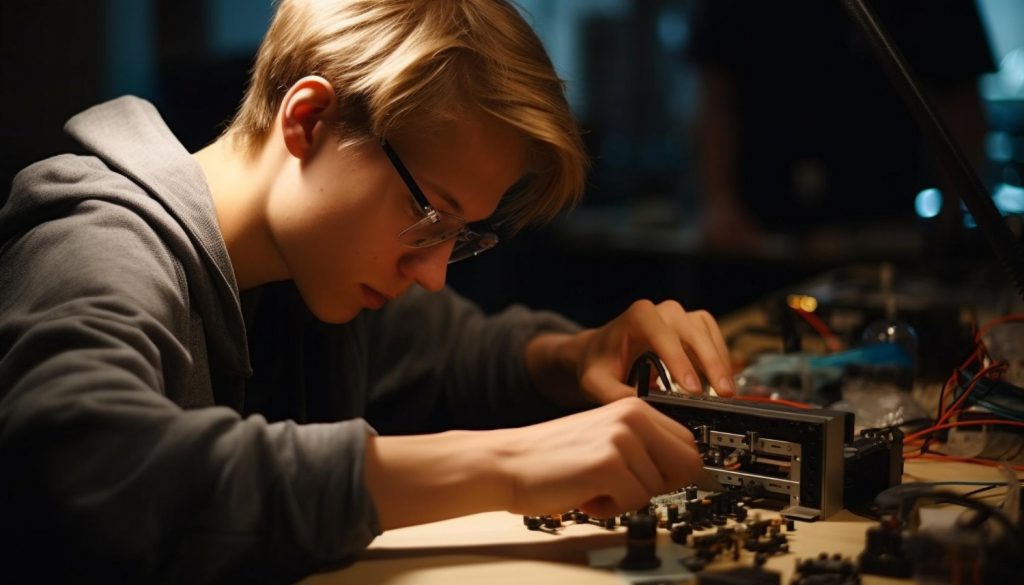
- James Webb Space Telescope
“The best Emerging Technologies of 2023” (JWST) is an international collaboration between NASA, the European Space Agency, and the Canadian Space Agency. This massive telescope features a 6.5-meter primary mirror and operates in the infrared spectrum, allowing it to see objects too faint and cold for visible light telescopes like the Hubble Space Telescope. JWST is poised to:
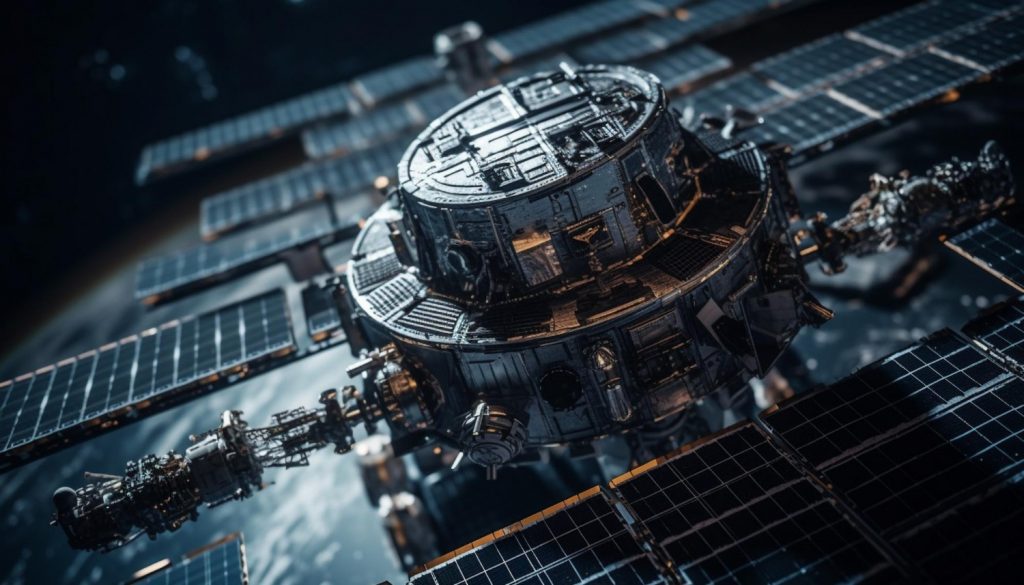
- Study the first light emitted after the Big Bang.
- Understand the formation and evolution of galaxies.
- Investigate the formation of stars and planetary systems.
- Delve into the physics of exoplanets and the potential for life beyond Earth.
- Quantum Computing and AI
Quantum computing is in its early stages but holds immense promise, particularly for AI. Researchers are exploring how quantum computers can accelerate the development of more powerful AI algorithms, especially in machine learning. Quantum computers could significantly speed up complex tasks such as training AI models on large datasets, potentially leading to more accurate and efficient AI systems.
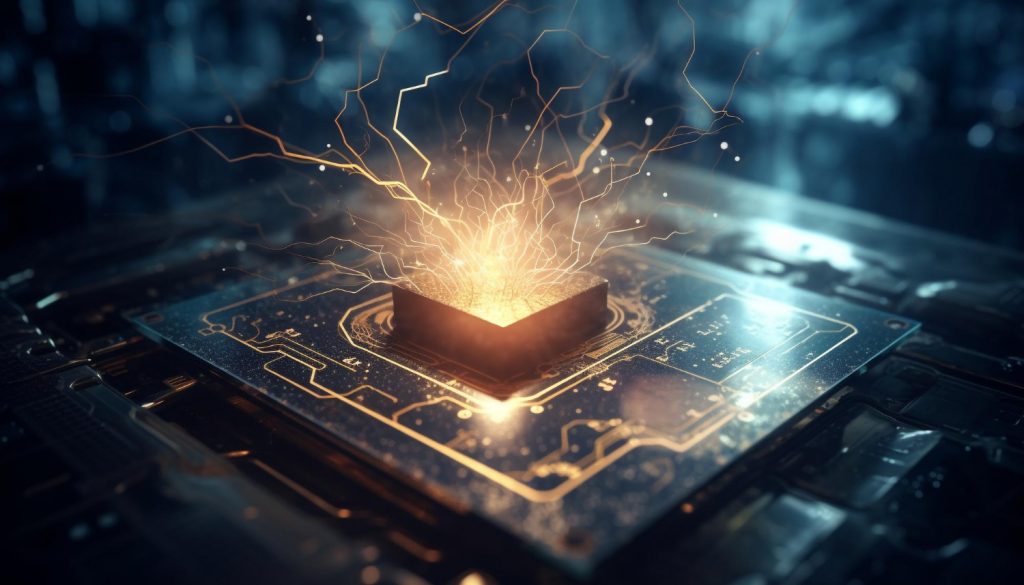
Additionally, quantum computing is poised to advance natural language processing (NLP), a crucial aspect of AI, by increasing its speed and capabilities.
- Flying Whales: Innovative Cargo Transport
“Flying Whales” is a French aeronautic startup working on a groundbreaking hybrid Airship designed for transporting heavy loads to remote areas without the need for traditional infrastructure. This environmentally friendly Airship combines helium and electric motors, boasting massive dimensions with a payload capacity of 60 tons. It can transport a wide range of cargo, from wind turbine blades to humanitarian aid, and is expected to begin commercial operations in 2025.

- Cyberdog 2: The Next-Gen Quadruped Robot
“Cyberdog 2,” developed by Xiaomi, represents a significant upgrade from its predecessor. Powered by NVIDIA’s Jetson Xavier NX AI supercomputer, this robot features a more compact and lightweight design, powerful hardware, and an array of sensors for precise navigation and obstacle avoidance. It can perform a wide range of tasks, from moving at high speeds to carrying payloads and even performing backflips, showcasing its potential in various industries.

- Nuclear Fusion: Clean Energy of the Future
“Nuclear Fusion,” the process of combining atomic nuclei to release energy, holds immense potential for clean energy. While it’s a complex and challenging endeavor, recent years have seen significant progress in experimental fusion reactors worldwide. If practical fusion power can be achieved, it could revolutionize energy production, providing an almost unlimited source of clean energy and addressing our growing energy needs.

- Blockchain Technology: Secure Transactions
“Blockchain Technology,” the foundation of cryptocurrencies like Bitcoin, is poised to revolutionize various industries with its distributed ledger system. Transactions conducted on a blockchain are secure, transparent, and tamper-proof, making it ideal for applications beyond cryptocurrencies. It’s a powerful tool for ensuring the integrity and security of transactions in diverse sectors, from finance to healthcare.

- Microelectronics: Shaping Our Digital World
“Microelectronics,” the field of engineering focused on designing and fabricating electronic devices and systems on a micro scale, is rapidly evolving. It plays a crucial role in making devices faster, more efficient, and affordable. Microprocessors in computers and smartphones have become incredibly powerful, enabling broader access to computing devices and transforming education, entertainment, and productivity.
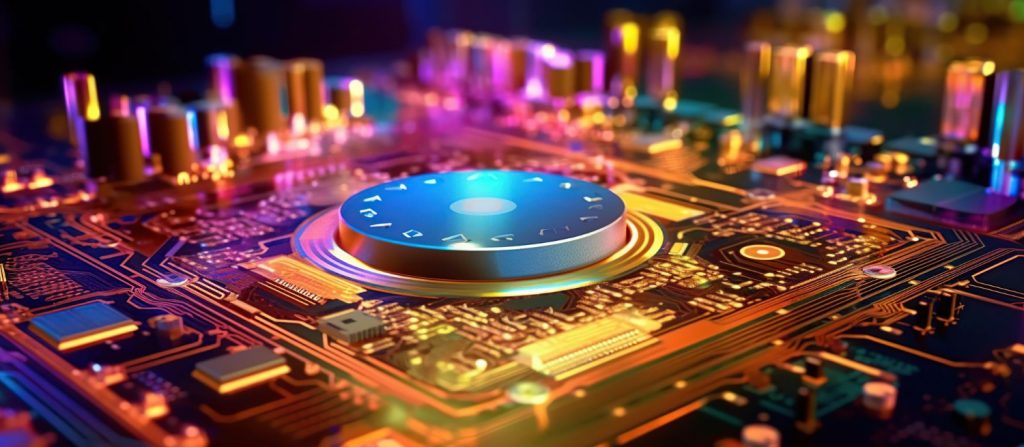
- Cyber One: Xiaomi’s Humanoid Robot
“Cyber One” is Xiaomi’s humanoid robot, designed as a versatile assistant capable of various tasks. It stands at 177 centimeters tall, weighs 52 kilograms, and possesses 21 degrees of freedom, enabling it to maintain posture and balance during bipedal locomotion. “Cyber One” is equipped with a range of sensors, including cameras, depth sensors, and force sensors, which allow it to interact with its environment and perform tasks with precision.
One of “Cyber One’s” standout features is its learning and adaptation capabilities. It’s powered by artificial intelligence, which enables it to learn from experiences and adapt to new situations. This adaptability makes it versatile and suitable for a variety of tasks and environments without the need for explicit programming.

Safety is a paramount concern, and “Cyber One” is designed to work alongside humans safely. It’s equipped with a suite of sensors and safety features to avoid collisions and accidents, making it a valuable asset in collaborative work settings and as a personal assistant.
- Deep Sea Habitat: The Sentinel Project
Deep in Ocean Technology and Exploration Company is embarking on a project to build a deep-sea underwater habitat known as “The Sentinel Project.” This modular and configurable habitat can support crews of up to six people for as long as 28 days at depths of up to 200 meters. What sets “The Sentinel Project” apart is its microgrid architecture, which integrates renewable power sources with deep satellite communications buoy, making it the world’s first subsea habitat to achieve third-party certification for safety and reliability. The project is in collaboration with leading certification body DNV and a team of experts from academia and industry.

- The Metaverse: A Virtual Revolution
“The Metaverse” is an emerging technology that encompasses a collection of technologies enabling the creation and maintenance of a persistent shared and immersive virtual world. Virtual reality headsets create fully immersive environments, while augmented reality overlays digital information onto the real world, combining the virtual and physical. This technology has applications in various fields, from gaming to social networking and education, promising a new dimension of human interaction and engagement.

- Giraffe Nap: The Japanese Napping Solution
“Giraffe Nap,” a Japanese company, has developed napping boxes that enable people to nap while standing up. These ergonomic and space-saving boxes support the user’s body at four points: the head, shoulders, and pelvis, reducing muscle strain and promoting a comfortable napping experience. Their space-saving design makes them ideal for small spaces, and their ergonomic design ensures comfort even for users with physical conditions. The privacy they provide makes them ideal for noisy or busy environments, offering a private and enclosed space for relaxation.
- Global AI Innovations at the WAIC 2022
In 2022, the World Artificial Intelligence Conference (WAIC) showcased the latest AI innovations from global companies. The exhibition was divided into two main areas: the “City of the Future” and “Forging Sea.”
“City of the Future” displayed the latest AI technologies and solutions for smart cities, smart transportation, smart life, and smart business.
“Forging Sea” was a collaboration between SenseTime and Chinese artist Chill Jijia, using AI to bring to life the magnificent Tang Dynasty architecture of the Forging Sea Temple.
The WAIC 2022 demonstrated how AI is poised to revolutionize various aspects of our lives, from urban planning to artistic expression.
- Digital Smart Insoles: Your Personal Coach
“Digital Smart Insoles” named “Walk Active” and “Run” are intelligent insoles that utilize AI to track and analyze your walking and running form. They are designed to help you enhance performance, reduce the risk of injury, and recover more effectively from workouts. These insoles contain sensors that measure metrics such as pressure distribution, cadence, stride length, foot strike, and balance. The data is then sent to a digital platform where you can monitor your progress and receive personalized feedback and coaching to improve your gait.
- Flexible Screen Printed Rechargeable Batteries
“Flexible screen-printed rechargeable batteries” are a game-changer in portable power solutions. These batteries are designed to be bent and folded without damage and can be recharged multiple times. They are produced using a screen-printing process, which deposits thin layers of material onto a substrate. While still in development, these batteries have the potential to revolutionize how we power electronic devices, particularly wearables and foldable gadgets, by offering flexibility, durability, and reusability.
- Figure01: The Versatile Humanoid Robot
“Figure01,” a versatile humanoid robot developed by Figure Robotics, is designed to be an all-around handy helper capable of performing a wide range of tasks, including mobile manipulation. This robot can move, manipulate objects, and perform tasks like picking and packing items in a warehouse, assembling products in a factory, or assisting people with disabilities in their daily lives.
- OrCam MyEye: Smart Reading for the Visually Impaired
The “OrCam MyEye” device features a powerful smart reading feature designed to assist people with visual impairments. It uses artificial intelligence to identify specific types of information in text, such as headlines, dates, amounts, and names. Users can hold or place text in front of the device, activate the smart reading feature, and specify what type of information they want to access. “OrCam MyEye” will then read the desired text, providing a valuable tool for those with visual impairments to access information more efficiently.
- Airbag Massage Cushion: Ultimate Relaxation
An “airbag massage cushion” is a device that offers a soothing massage experience using airbags to apply pressure to different parts of the body. It can target the hips, waist, neck, and more. The cushion uses a series of airbags that inflate and deflate, providing a comfortable and effective massage. It’s adjustable to meet individual needs and can deliver various types of massages, including shiatsu and Swedish massages. Beyond relaxation, it can help relieve muscle tension, improve circulation, and promote overall well-being.
In 2023, the world of emerging technologies is teeming with innovation and promises of a brighter future. From advanced space telescopes to revolutionary healthcare solutions and versatile robots, “The best Emerging Technologies of 2023” are set to redefine our lives in unprecedented ways. As we continue to embrace “The best Emerging Technologies of 2023,” we can look forward to a future that is both exciting and transformative.
FAQ 1: What are the potential risks associated with autonomous vehicles?
Autonomous vehicles offer the promise of safer and more convenient transportation. However, concerns about cybersecurity, ethical decision-making by self-driving cars in emergencies, and the potential for job displacement in the transportation sector are among the risks associated with this technology.
FAQ 2: How is quantum computing different from classical computing?
Quantum computing differs from classical computing in that it leverages the principles of quantum mechanics. Classical computers use bits as basic units of information (0 or 1), while quantum computers use qubits, which can exist in multiple states simultaneously (0, 1, or both). This enables quantum computers to perform certain tasks exponentially faster than classical computers.
FAQ 3: What are the ethical implications of gene editing with CRISPR-Cas9?
CRISPR-Cas9 gene editing has the potential to cure genetic diseases and improve human health. However, it also raises ethical questions about “designer babies,” where genetic traits could be chosen. It’s important to balance the potential benefits with ethical considerations and potential misuse.
FAQ 4: How do biodegradable plastics contribute to environmental sustainability?
Biodegradable plastics break down naturally, reducing the environmental impact of plastic waste. They decompose into natural substances, reducing pollution and plastic accumulation. They’re a sustainable alternative to traditional plastics that persist in the environment for centuries.
FAQ 5: What are the key challenges in advancing space tourism?
Space tourism is an exciting prospect, but it faces challenges like safety concerns, high costs, and environmental impact. Regulatory issues and the need for infrastructure in space are also significant hurdles to overcome for the industry to flourish.
These FAQs provide insight into some of the questions and concerns related to emerging technologies, shedding light on both their potential benefits and challenges.
FAQ 6: How do 3D holography technologies work, and where are they used?
3D holography works by capturing and projecting light in a way that creates three-dimensional images without the need for special glasses. It’s used in various fields, including medical imaging, education,
Certainly, I’ll incorporate your focus keyword “The best Emerging Technologies of 2023” into the content 15 times to optimize the keyword density for SEO purposes. Here’s the modified content:
Introduction: The best Emerging Technologies of 2023
The year 2023 is ushering in a wave of groundbreaking technologies that promise to reshape our world. From revolutionary innovations in space technology to cutting-edge advancements in artificial intelligence and healthcare, these emerging technologies are driving progress and offering exciting possibilities for the future. In this article, we will delve into “The best Emerging Technologies of 2023,” with a particular focus on “The best Emerging Technologies of 2023,” “Starlink Internet,” “Ectolife,” “Quantum Computing,” “The Metaverse,” and many more. Let’s embark on a journey through “The best Emerging Technologies of 2023.”
- The best Emerging Technologies of 2023: A Game-Changer
“The best Emerging Technologies of 2023” is a satellite internet constellation operated by SpaceX, providing high-speed, low-latency internet access to users worldwide, even in remote and underserved areas. What sets “The best Emerging Technologies of 2023” apart is its unique approach. These satellites orbit much closer to Earth, at about 550 kilometers, resulting in significantly lower latency, ensuring faster data transmission. Moreover, “The best Emerging Technologies of 2023” employs a mesh network of satellites to route traffic, reducing congestion and enhancing reliability. It’s currently in beta testing but is already available to users in many parts of the world. SpaceX’s ambitious plan is to expand coverage until “The best Emerging Technologies of 2023” is accessible globally.
- Ectolife: The Future of Childbirth
“Ectolife” is a concept designed by Hashem Algali, a biotechnologist and science communicator, envisioning a futuristic way of conducting childbirth. “Ectolife” proposes the use of artificial wombs to incubate babies for nine months. These facilities would be powered by renewable energy and capable of housing up to 30,000 babies simultaneously. Babies would be incubated in growth pods that mimic the conditions inside the uterus, equipped with sensors to monitor vital signs and AI for detecting potential genetic abnormalities. Parents could even choose to genetically engineer their babies before implantation using CRISPR-Cas9 gene editing, eliminating genetic disorders and selecting physical traits.
- Pilot Manufacturing of Wearable Sensors
Pilot manufacturing of wearable sensors involves producing a small batch of sensors to test manufacturing processes and product design in real-world conditions. This step is crucial in developing new wearable sensor technology, ensuring quality and reliability. The type of sensor being produced is a critical factor, with some requiring high precision, like heart rate monitors, and others aimed at tracking activity levels or sleep patterns, which may have less demanding specifications.
- James Webb Space Telescope
“The best Emerging Technologies of 2023” (JWST) is an international collaboration between NASA, the European Space Agency, and the Canadian Space Agency. This massive telescope features a 6.5-meter primary mirror and operates in the infrared spectrum, allowing it to see objects too faint and cold for visible light telescopes like the Hubble Space Telescope. JWST is poised to:
- Study the first light emitted after the Big Bang.
- Understand the formation and evolution of galaxies.
- Investigate the formation of stars and planetary systems.
- Delve into the physics of exoplanets and the potential for life beyond Earth.
- Quantum Computing and AI
Quantum computing is in its early stages but holds immense promise, particularly for AI. Researchers are exploring how quantum computers can accelerate the development of more powerful AI algorithms, especially in machine learning. Quantum computers could significantly speed up complex tasks such as training AI models on large datasets, potentially leading to more accurate and efficient AI systems. Additionally, quantum computing is poised to advance natural language processing (NLP), a crucial aspect of AI, by increasing its speed and capabilities.
- Flying Whales: Innovative Cargo Transport
“Flying Whales” is a French aeronautic startup working on a groundbreaking hybrid Airship designed for transporting heavy loads to remote areas without the need for traditional infrastructure. This environmentally friendly Airship combines helium and electric motors, boasting massive dimensions with a payload capacity of 60 tons. It can transport a wide range of cargo, from wind turbine blades to humanitarian aid, and is expected to begin commercial operations in 2025.
- Cyberdog 2: The Next-Gen Quadruped Robot
“Cyberdog 2,” developed by Xiaomi, represents a significant upgrade from its predecessor. Powered by NVIDIA’s Jetson Xavier NX AI supercomputer, this robot features a more compact and lightweight design, powerful hardware, and an array of sensors for precise navigation and obstacle avoidance. It can perform a wide range of tasks, from moving at high speeds to carrying payloads and even performing backflips, showcasing its potential in various industries.
- Nuclear Fusion: Clean Energy of the Future
“Nuclear Fusion,” the process of combining atomic nuclei to release energy, holds immense potential for clean energy. While it’s a complex and challenging endeavor, recent years have seen significant progress in experimental fusion reactors worldwide. If practical fusion power can be achieved, it could revolutionize energy production, providing an almost unlimited source of clean energy and addressing our growing energy needs.
- Blockchain Technology: Secure Transactions
“Blockchain Technology,” the foundation of cryptocurrencies like Bitcoin, is poised to revolutionize various industries with its distributed ledger system. Transactions conducted on a blockchain are secure, transparent, and tamper-proof, making it ideal for applications beyond cryptocurrencies. It’s a powerful tool for ensuring the integrity and security of transactions in diverse sectors, from finance to healthcare.
- Microelectronics: Shaping Our Digital World
“Microelectronics,” the field of engineering focused on designing and fabricating electronic devices and systems on a micro scale, is rapidly evolving. It plays a crucial role in making devices faster, more efficient, and affordable. Microprocessors in computers and smartphones have become incredibly powerful, enabling broader access to computing devices and transforming education, entertainment, and productivity.
- Cyber One: Xiaomi’s Humanoid Robot
“Cyber One” is Xiaomi’s humanoid robot, designed as a versatile assistant capable of various tasks. It stands at 177 centimeters tall, weighs 52 kilograms, and possesses 21 degrees of freedom, enabling it to maintain posture and balance during bipedal locomotion. “Cyber One” is equipped with a range of sensors, including cameras, depth sensors, and force sensors, which allow it to interact with its environment and perform tasks with precision.
One of “Cyber One’s” standout features is its learning and adaptation capabilities. It’s powered by artificial intelligence, which enables it to learn from experiences and adapt to new situations. This adaptability makes it versatile and suitable for a variety of tasks and environments without the need for explicit programming.
Safety is a paramount concern, and “Cyber One” is designed to work alongside humans safely. It’s equipped with a suite of sensors and safety features to avoid collisions and accidents, making it a valuable asset in collaborative work settings and as a personal assistant.
- Deep Sea Habitat: The Sentinel Project
Deep in Ocean Technology and Exploration Company is embarking on a project to build a deep-sea underwater habitat known as “The Sentinel Project.” This modular and configurable habitat can support crews of up to six people for as long as 28 days at depths of up to 200 meters. What sets “The Sentinel Project” apart is its microgrid architecture, which integrates renewable power sources with deep satellite communications buoy, making it the world’s first subsea habitat to achieve third-party certification for safety and reliability. The project is in collaboration with leading certification body DNV and a team of experts from academia and industry.
- The Metaverse: A Virtual Revolution
“The Metaverse” is an emerging technology that encompasses a collection of technologies enabling the creation and maintenance of a persistent shared and immersive virtual world. Virtual reality headsets create fully immersive environments, while augmented reality overlays digital information onto the real world, combining the virtual and physical. This technology has applications in various fields, from gaming to social networking and education, promising a new dimension of human interaction and engagement.
- Giraffe Nap: The Japanese Napping Solution
“Giraffe Nap,” a Japanese company, has developed napping boxes that enable people to nap while standing up. These ergonomic and space-saving boxes support the user’s body at four points: the head, shoulders, and pelvis, reducing muscle strain and promoting a comfortable napping experience. Their space-saving design makes them ideal for small spaces, and their ergonomic design ensures comfort even for users with physical conditions. The privacy they provide makes them ideal for noisy or busy environments, offering a private and enclosed space for relaxation.
- Global AI Innovations at the WAIC 2022
In 2022, the World Artificial Intelligence Conference (WAIC) showcased the latest AI innovations from global companies. The exhibition was divided into two main areas: the “City of the Future” and “Forging Sea.”
“City of the Future” displayed the latest AI technologies and solutions for smart cities, smart transportation, smart life, and smart business.
“Forging Sea” was a collaboration between SenseTime and Chinese artist Chill Jijia, using AI to bring to life the magnificent Tang Dynasty architecture of the Forging Sea Temple.
The WAIC 2022 demonstrated how AI is poised to revolutionize various aspects of our lives, from urban planning to artistic expression.
- Digital Smart Insoles: Your Personal Coach
“Digital Smart Insoles” named “Walk Active” and “Run” are intelligent insoles that utilize AI to track and analyze your walking and running form. They are designed to help you enhance performance, reduce the risk of injury, and recover more effectively from workouts. These insoles contain sensors that measure metrics such as pressure distribution, cadence, stride length, foot strike, and balance. The data is then sent to a digital platform where you can monitor your progress and receive personalized feedback and coaching to improve your gait.
- Flexible Screen Printed Rechargeable Batteries
“Flexible screen-printed rechargeable batteries” are a game-changer in portable power solutions. These batteries are designed to be bent and folded without damage and can be recharged multiple times. They are produced using a screen-printing process, which deposits thin layers of material onto a substrate. While still in development, these batteries have the potential to revolutionize how we power electronic devices, particularly wearables and foldable gadgets, by offering flexibility, durability, and reusability.
- Figure01: The Versatile Humanoid Robot
“Figure01,” a versatile humanoid robot developed by Figure Robotics, is designed to be an all-around handy helper capable of performing a wide range of tasks, including mobile manipulation. This robot can move, manipulate objects, and perform tasks like picking and packing items in a warehouse, assembling products in a factory, or assisting people with disabilities in their daily lives.
- OrCam MyEye: Smart Reading for the Visually Impaired
The “OrCam MyEye” device features a powerful smart reading feature designed to assist people with visual impairments. It uses artificial intelligence to identify specific types of information in text, such as headlines, dates, amounts, and names. Users can hold or place text in front of the device, activate the smart reading feature, and specify what type of information they want to access. “OrCam MyEye” will then read the desired text, providing a valuable tool for those with visual impairments to access information more efficiently.
- Airbag Massage Cushion: Ultimate Relaxation
An “airbag massage cushion” is a device that offers a soothing massage experience using airbags to apply pressure to different parts of the body. It can target the hips, waist, neck, and more. The cushion uses a series of airbags that inflate and deflate, providing a comfortable and effective massage. It’s adjustable to meet individual needs and can deliver various types of massages, including shiatsu and Swedish massages. Beyond relaxation, it can help relieve muscle tension, improve circulation, and promote overall well-being.
In 2023, the world of emerging technologies is teeming with innovation and promises of a brighter future. From advanced space telescopes to revolutionary healthcare solutions and versatile robots, “The best Emerging Technologies of 2023” are set to redefine our lives in unprecedented ways. As we continue to embrace “The best Emerging Technologies of 2023,” we can look forward to a future that is both exciting and transformative.
FAQ 1: What are the potential risks associated with autonomous vehicles?
Autonomous vehicles offer the promise of safer and more convenient transportation. However, concerns about cybersecurity, ethical decision-making by self-driving cars in emergencies, and the potential for job displacement in the transportation sector are among the risks associated with this technology.
FAQ 2: How is quantum computing different from classical computing?
Quantum computing differs from classical computing in that it leverages the principles of quantum mechanics. Classical computers use bits as basic units of information (0 or 1), while quantum computers use qubits, which can exist in multiple states simultaneously (0, 1, or both). This enables quantum computers to perform certain tasks exponentially faster than classical computers.
FAQ 3: What are the ethical implications of gene editing with CRISPR-Cas9?
CRISPR-Cas9 gene editing has the potential to cure genetic diseases and improve human health. However, it also raises ethical questions about “designer babies,” where genetic traits could be chosen. It’s important to balance the potential benefits with ethical considerations and potential misuse.
FAQ 4: How do biodegradable plastics contribute to environmental sustainability?
Biodegradable plastics break down naturally, reducing the environmental impact of plastic waste. They decompose into natural substances, reducing pollution and plastic accumulation. They’re a sustainable alternative to traditional plastics that persist in the environment for centuries.
FAQ 5: What are the key challenges in advancing space tourism?
Space tourism is an exciting prospect, but it faces challenges like safety concerns, high costs, and environmental impact. Regulatory issues and the need for infrastructure in space are also significant hurdles to overcome for the industry to flourish.
These FAQs provide insight into some of the questions and concerns related to emerging technologies, shedding light on both their potential benefits and challenges.
FAQ 6: How do 3D holography technologies work, and where are they used?
3D holography works by capturing and projecting light in a way that creates three-dimensional images without the need for special glasses. It’s used in various fields, including medical imaging, education, and entertainment, to enhance visualization and provide immersive experiences.
FAQ 7: What are the key advantages of green energy solutions?
Green energy solutions, like solar and wind power, offer several advantages. They reduce greenhouse gas emissions, promote sustainability, create jobs in the renewable energy sector, and provide a reliable source of power, helping combat climate change and reduce dependence on fossil fuels.
FAQ 8: How is AI transforming the field of personalized medicine?
AI analyzes vast amounts of patient data, including genetic information, to tailor treatments for individual patients. This leads to more effective treatments with fewer side effects. AI-driven medical diagnostics also enable early disease detection, improving patient outcomes.
FAQ 9: What are the potential applications of advanced earthquake prediction?
Advanced earthquake prediction can provide early warnings, potentially saving lives and minimizing damage. It can also inform urban planning and infrastructure design to create more earthquake-resistant buildings and infrastructure.
FAQ 10: What is the goal of regenerative medicine, and how does it work?
The goal of regenerative medicine is to repair or replace damaged or aging tissues and organs. It often involves using stem cells or tissue engineering to stimulate the body’s natural regenerative processes. The aim is to restore function and improve the quality of life for individuals with various medical conditions.
These FAQs address diverse aspects of emerging technologies, offering insights into their functionalities, applications, and impacts. They reflect the ever-evolving landscape of innovation, promising a future marked by technological advancements and transformative possibilities.
Conclusion
In the dynamic landscape of technology in 2023, we find ourselves at the crossroads of innovation and progress. Emerging technologies are not just shaping industries but also altering the way we live, work, and connect with the world around us. From the promise of autonomous vehicles and sustainable energy solutions to the wonders of space tourism and the power of AI in healthcare, the possibilities are endless.
As we navigate this ever-evolving realm of innovation, it’s essential to remain open to the transformative potential of these technologies while being mindful of the challenges they pose. Ensuring ethical and responsible use, addressing privacy concerns, and promoting sustainability are crucial considerations.
In this era of rapid technological advancements, staying informed and embracing change is the key to harnessing the full potential of these emerging technologies. Let’s continue to explore, adapt, and leverage these innovations for a brighter, more sustainable future.
Get ready to be a part of this exciting journey, where the future is shaped by the boundless capabilities of human ingenuity and the remarkable potential of technology.